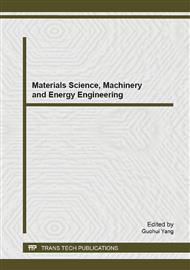p.3
p.9
p.17
p.23
p.28
p.34
p.40
p.46
p.53
The Effects of Chemical Resistance for Nanocomposite Materials via Nano-Silica Addition into Glass Fiber/Epoxy
Abstract:
Nanocomposite samples containing epoxy resin, glass fiber and 0~2 wt.% SiO2 nanopowder are prepared. The effects of SiO2 addition on the chemical resistance, glass transition temperature (Tg) and dynamic mechanical properties of the various samples are then observed. The chemical resistance of the nanocomposite specimens is compared with that of pure glass fiber/epoxy composite specimens when tested in acetone. The results show that the addition of 2 wt.% SiO2 increases the value of storage modulus by 1646MPa compared to that of the sample containing no silica nanopowder. Following immersion in acetone, all the nanocomposite specimen storage modulus decreased, but the addition of SiO2 reduced the decline, where the 2 wt. % samples decrease from 11.76% reduction to 0.84% and no significant change in the Tg compared to that of the sample with no silica nanopowder. Therefore, the experimental results indicate that 2 wt.% SiO2 addition is beneficial in improving chemical resistance, glass transition temperature, and dynamic mechanical properties of epoxy resin / glass fiber nanocomposites.
Info:
Periodical:
Pages:
28-33
Citation:
Online since:
December 2013
Authors:
Price:
Сopyright:
© 2014 Trans Tech Publications Ltd. All Rights Reserved
Share:
Citation:


